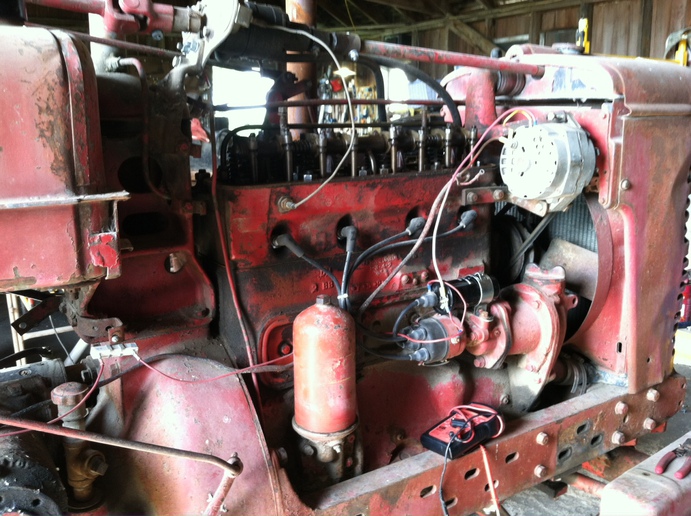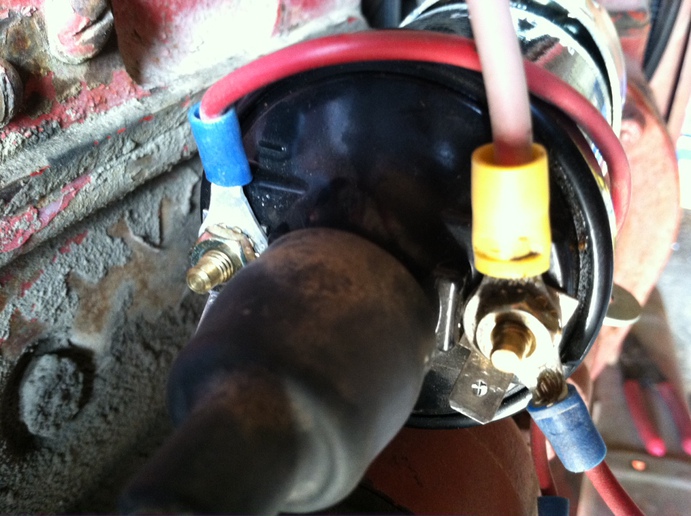Nate V. IA
Member
Didn't someone have a trouble shooting diagram for these old farmalls, I cant seem to find it in the archives.
Heres the deal. Bought a M last fall, motor was stuck, deal was too good I couldn't pass it up. When I got it home I put some atf/acetone mix in and and drained the oil and water(rain) out, it broke free the next day.
After sitting all winter I started working on it yesterday, new oil and filter, new fuel line, cleaned carb, took the valve cover off, all valves are working.
It will turn over but no spark at the points and doesn't seem to be wetting the plugs even with full choke and gas running out of the carb.
I have a wire coming from ing. switch to resistor with (switch in the on pos.) 11.4 volts before and 4.0v after the resistor and very little voltage on the neg. side. Battery shows 12.3 volts and turns the engine fast enough. Look at the pictures and see if its wired up correct, the battery is 12v neg ground. Points are old gap is .02, wife is bringing home a new set of points.
Thanks for any ideas.
Nate


Heres the deal. Bought a M last fall, motor was stuck, deal was too good I couldn't pass it up. When I got it home I put some atf/acetone mix in and and drained the oil and water(rain) out, it broke free the next day.
After sitting all winter I started working on it yesterday, new oil and filter, new fuel line, cleaned carb, took the valve cover off, all valves are working.
It will turn over but no spark at the points and doesn't seem to be wetting the plugs even with full choke and gas running out of the carb.
I have a wire coming from ing. switch to resistor with (switch in the on pos.) 11.4 volts before and 4.0v after the resistor and very little voltage on the neg. side. Battery shows 12.3 volts and turns the engine fast enough. Look at the pictures and see if its wired up correct, the battery is 12v neg ground. Points are old gap is .02, wife is bringing home a new set of points.
Thanks for any ideas.
Nate



